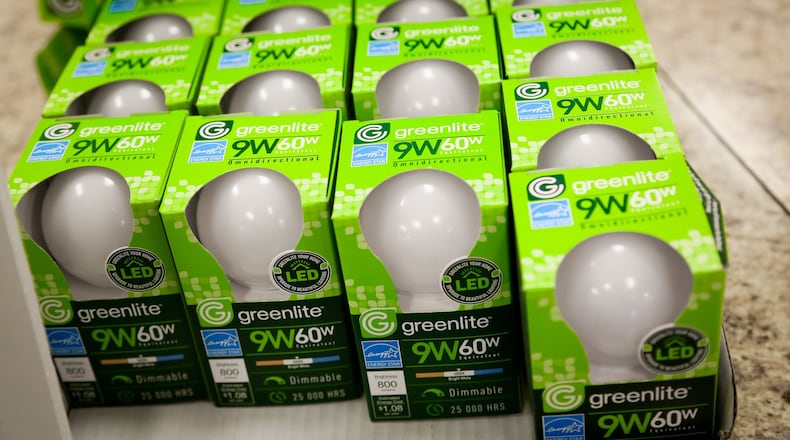- Reduced their electric load by 1.53 percent over two years;
- Implemented energy-efficiencies that should save residential, commercial, industrial customers $10.3 million over the lifetimes of those energy-efficient devices; and
- Cut the need for enough electricity to reduce the amount of carbon-dioxide emission by an estimated 216.97 million pounds over the products' lifetimes.
Spratley’s Office of Consumers’ Counsel, whose job with the state from the mid-1970s until 1993 was to help public-utility customers across Ohio advocate for lower utility rates, often criticized shareholder-owned utilities for not doing enough to encourage use of energy-efficient products to help their customers reduce their energy bills.
He was pleased to hear about Hamilton’s work with Efficiency Smart, in a contract through the organization American Municipal Power, to do just that. Spratley, who knows Maynard from his time as utilities director for Bowling Green, Ohio, said he wasn’t surprised, given Maynard’s past.
Bowling Green “was the first utility in the state — of any kind of utility — to put up (utility-scale) wind turbines, and that was right before he took over,” said Spratley, who since 2001 has been executive director of Green Energy Ohio, a not-for-profit organization that advocates for environmentally and economically sustainable energy practices.
“I think Hamilton is clearly one of the greenest municipals in the state,” Spratley said. “The others are kind-of little liberal college towns, like Oberlin and Bowling Green.”
Green Energy Ohio is working in southwestern Ohio to encourage small businesses and non-profit organizations to do energy audits that can help them determine how economical it would be for them to use more energy-efficient devices.
“One of the hard parts is to get the efficiency to as many of your customers as you can,” Spratley said. “It sounds like Hamilton is accomplishing that.”
Spratley said he considers switching to light-emitting diode (LED) bulbs “the first thing people should do — and the price has come down so dramatically.”
“I think that’s a good example, what Hamilton’s doing,” Spratley said. “The municipal utilities have been ahead of the big utilities now, for years, particularly in renewable energy, and part of that, I think, is they’re part of the government, and they’re always smaller than the big utility.”
“But when I think of Hamilton, the first thing I think of is the big hydro systems that are feeding power in there, that are renewable energy,” Spratley said. “Anything you can do to save energy reduces the carbon footprint, and I think that’s a good thing. I think that’ll put Hamilton on the map, in terms of how green it is.”
The city operates three environmentally friendly hydroelectric facilities: Two on the Ohio River, at the Greenup and Meldahl locks and dams, and an older, smaller one along the Great Miami River.
About the Author
